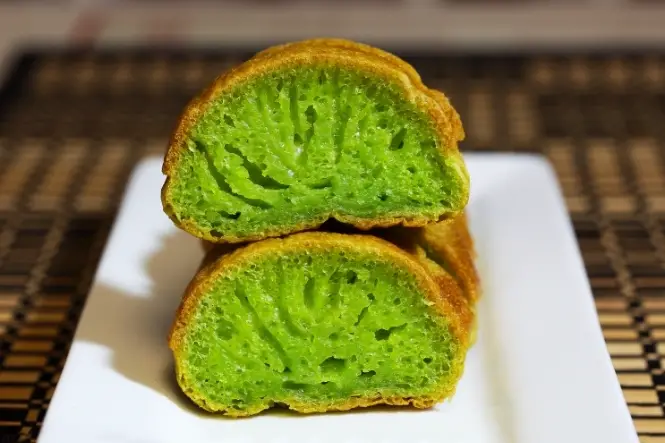Honeycomb Cake is a classic treat, very popular in Malaysia where it is known as Kuih Sarang Semut and Indonesia where it is called Bolu Sarang Semut and sometimes contains palm alcohol to add even more richness!
The cake has a distinctive and unusual texture, it’s important not to expect a traditional sponge because the cake’s main appeals are the combination of sweetness and bitterness – delivered by the caramel, and the moist, springy texture – resulting from the cooking method. For the cake to work you have to avoid using a convection or fan oven as this will disturb the creation of the tunnels, so turn off the fan element if you have one.
The ingredients are straightforward and it’s a good cake to make from store cupboard ingredients for a special occasion – the cake is often better the next day, when it has an added moistness.
Ingredients
- 210g light brown sugar
- 240ml water
- 80g salted butter (the salt adds to the flavour of the caramel)
- 6 medium eggs
- 160g condensed milk (do not use the light form of condensed milk as it does not allow the cake to develop its wonderful flavour and texture)
- 180g plain white flour
- 2½ teaspoons bicarbonate of soda
In a medium saucepan over low heat, caramelise the sugar until it turns a deep golden brown by stirring it constantly – if you cease to stir the sugar will scorch and the flavour will be burnt. Once the sugar has caramelised successfully, pour in the water – but do it with extreme care as it will spit when it hits the molten sugar. It’s a good idea to put on a pair of rubber gloves to add the water as that stops any splashes of hot sugar from hitting your hands. The sugar will crystallise and become dense and granular again, but don’t worry, just keep stirring as the water boils away and the two ingredients will eventually combine to form a thin brown syrup. At this point remove the saucepan from the heat.
Put the butter in the saucepan and swirl gently to melt a bit, then set the pan aside to cool.
Preheat oven to 180 C/350 F or gas 4 and grease a 22 cm springform tin and line the base with baking paper.
In a large bowl, blend together the eggs and condensed milk – this is easiest to do with an electric mixer but if you don’t have one, use a large wooden spoon and stand the bowl on a folded tea towel so that you can beat the ingredients thoroughly without the bowl sliding around. At this point you pour the caramel the eggs and milk, and don’t worry about any lumps of butter that remain as they contribute to the creation of the ‘tunnels’ or ‘honeycomb’ that gives the cake its name.
Sift the flour and bicarbonate of soda together, lifting the sieve into the air to get lots of air into the mixture, then fold into the egg mixture using a figure of eight movement to fully incorporate the dry ingredients without over blending. If you use an electric mixer for this point, it will ‘knock down’ the batter and produce a flat batter that tastes good but has fewer of the trademark tunnels.
Pour the resulting batter into the prepared cake pan and leave it to sit on the side at normal room temperature for five to eight minutes until it begins to bubble. Don’t worry about that either, it’s a necessary part of the process.
The cake takes 50 minutes to an hour to cook – after 45 minutes you can check the consistency of the cake by inserting a skewer into the centre of the cake to see if it comes out clean. If not, give it another ten minutes. The top of the cake should look dark and crackly. It’s better to allow the cake to cook slowly and at a low temperature, than to have it cook too fast, as this can also inhibit the formation of the tunnels. If the cake looks as if it is over-cooking but the centre still seems moist, cover the top of the cake with a piece of baking paper to stop it scorching while the core cooks through.
When the cake is cool, which can take several hours, loosen it from the sides of the pan with a palette knife, open the springform and ease the cake out onto a pretty serving plate. If you wish to store the cake, put it in an airtight box overnight when it will develop a richer, moister texture.


